

By: Brian A. Hemstreet, PharmD, FCCP, BCPS

http://www.ucdenver.edu/academics/colleges/pharmacy/Departments/ClinicalPharmacy/DOCPFaculty/H-P/Pages/Brian-Hemstreet,-PharmD.aspx
Protective obstacles appropriate for procedures should be used arthritis in the knee causes buy 60 mg etoricoxib with mastercard, including gloves healing arthritis in fingers purchase etoricoxib without a prescription, goggles what is arthritis in back order generic etoricoxib on-line, robes rheumatoid arthritis fever buy etoricoxib 90mg low price, face shields, and other kinds of safety. Hands and uncovered pores and skin surfaces should be instantly and totally washed after contamination with blood or other physique fluids. It consists of a penicillin, normally ampicillin, plus an aminoglycoside such as gentamicin. Monitoring for antibiotic toxicity is important in addition to monitoring levels of aminoglycosides and vancomycin. Ensure sufficient oxygenation with blood gasoline monitoring, and provoke O2 therapy or ventilator support if needed. Use quantity expanders, 10-20 mL/kg (normal saline, albumin, and blood), and monitor the consumption of fluids and output of urine. Measures include treating the underlying disease; contemporary-frozen plasma, 10 mL/kg; vitamin K (Chapter eighty); platelet infusion; and attainable trade transfusion (Chapter 21). Multiple elements contribute to the elevated susceptibility of neonates to an infection, including developmental quantitative and qualitative neutrophil defects. Metabolic acidosis could accompany sepsis and is handled with bicarbonate and fluid substitute. Immunotherapy progress continues in the improvement of assorted hyperimmune globulins, monoclonal antibodies to the specific pathogens inflicting neonatal sepsis. They could prove to be significant adjuvants to the routine use of antibiotics for the remedy of sepsis. Flow chart based on American Academy of Pediatrics guidelines with some alterations based on scientific experiences. Neonatal meningitis is often accompanied by ventriculitis, which makes decision of an infection harder. There can be a predilection for vasculitis, which may lead to hemorrhage, thrombosis, and infarction. Many unusual organisms, including fungi and anaerobes, have been described in case reports of neonatal meningitis in debilitated and normal neonates. Meningitis have to be excluded in any toddler being evaluated for sepsis or an infection. Signs and symptoms of meningitis usually are much like these reported for sepsis. A Gram-stained smear could be useful in making a extra fast definitive analysis and identifying the initial classification of the causative agent. Normal values range from 8-32 white blood cells in varied research, a few of which may be polymorphonuclear cells. Rapid antigen checks are available for a number of organisms and should be accomplished on spinal fluid. Ventricular tap, with tradition and examination fluid, is indicated in sufferers not responding to remedy. Optimal antibiotic choice depends on tradition and sensitivity testing of causative organisms. Ampicillin and gentamicin are normally began as empiric therapy for suspected sepsis or meningitis. Nafcillin, methicillin, or vancomycin should be substituted for penicillin or ampicillin as initial coverage. Studies have shown no advantage to using intrathecal or intraventricular aminoglycosides. A better choice could also be third-generation cephalosporins (eg, cefotaxime or cefuroxime). Currently, most clinicians would use ampicillin plus cefotaxime as initial therapy. External ventricular drainage could also be indicated in certain circumstances sophisticated by ventriculitis. Treatment should proceed till 14 days after cultures are adverse or for 21 days, whichever is longer. Head circumference should be measured daily, and transillumination of the pinnacle and neurologic examination should be performed incessantly. Toxoplasma gondii is an intracellular parasitic protozoan capable of inflicting intrauterine an infection. The organism exists in three types: oocyst, tachyzoite, and tissue cyst (bradyzoites). Ingestion of oocysts is followed by penetration of gastrointestinal mucosa by sporozoites and circulation of tachyzoites, the ovoid unicellular organism attribute of acute infections. Actual transmission to the fetus is by the transplacental-fetal hematogenous route. In the continual type of the disease, organisms invade certain physique tissues, particularly these of the brain, eye, and striated muscle, forming bradyzoites. The vast majority of congenital toxoplasmosis circumstances are a result of acquired maternal main an infection during pregnancy; however, toxoplasmic reactivations can happen in immunosuppressed pregnant women and end in fetal an infection. The later in pregnancy that an infection is acquired, the extra probably is transmission to the fetus (first trimester, 17%; second trimester, 25%; and third trimester, sixty five% transmission). Infections transmitted earlier in gestation are likely to trigger extra extreme fetal effects (abortion, stillbirth, or extreme disease with teratogenesis). Rarely, a parasite could also be transmitted through an infected placenta during parturition. However, visual impairment, learning disabilities, or psychological impairment becomes apparent in a large share of kids months to a number of years later. It may also be transmitted in unpasteurized milk, in uncooked or undercooked meats (particularly pork), and through blood product transfusion (white blood cells). Premature infants have the next incidence of congenital toxoplasmosis than time period infants (25-50% of circumstances in some sequence). Congenital toxoplasmosis could also be manifested as scientific neonatal disease, disease in the first few months of life, late sequelae or relapsed an infection, or subclinical disease. Obstructive hydrocephalus, chorioretinitis, and intracranial calcifications kind the classic triad of toxoplasmosis. Toxoplasmosis has been related to congenital nephrosis, varied endocrinopathies (secondary to hypothalamic or pituitary effects), myocarditis, erythroblastosis with hydrops fetalis, and isolated psychological retardation. The analysis of congenital toxoplasmosis is most frequently based on scientific suspicion plus serologic checks; however, many hospital-based and industrial laboratories incessantly are misinterpreted or inaccurate. The recommendation is that every one suspected infections be confirmed in a reference laboratory setting such as the Palo Alto Medical Foundation (telephone: 650 853-4828). Isolation of the organism from placental tissue correlates strongly with fetal an infection. Toxoplasma-particular IgE antibodies are found in almost all women who seroconvert during pregnancy. The most attribute abnormalities are xanthochromia, mononuclear pleocytosis, and a really high protein level. Long-bone movies could present abnormalities, particularly, metaphyseal lucency and irregularity of the road of calcification at the epiphyseal plates with out periosteal response. Treatment of acute maternal toxoplasmosis appears to cut back the risk of fetal wastage and decreases the chance of congenital an infection. Treatment of symptomatic infants in the course of the first 6 months of life consists of a mix of pyrimethamine, sulfadiazine, and leucovorin calcium supplements. Pyrimethamine (1 mg/kg orally) is run in 1 or 2 divided doses daily or each other day after an initial loading dose of 2 mg/kg/day for two days. After a 6-month routine, remedy could be continued or modified to include 1-month courses of spiramycin alternating with 1-month courses of pyrimethamine, sulfadiazine, and leucovorin calcium for an extra 6 months. Corticosteroids are considerably controversial; often prednisone or methylprednisolone (1. They receive an initial 6-week course of pyrimethamine, sulfadiazine, and leucovorin calcium, followed by alternating courses of spiramycin for 6 weeks, and the opposite three medication repeated for 4 weeks. Healthy infants born to mothers with gestational toxoplasmosis could be handled with a 4-week course of pyrimethamine, sulfadiazine, and leucovorin calcium. If a analysis of congenital toxoplasmosis is established later, chemotherapy is sustained as delineated for infants with subclinical T. Infants handled with pyrimethamine and sulfadiazine require weekly blood counts, platelet counts, and urine microscopy to detect any antagonistic drug effects.
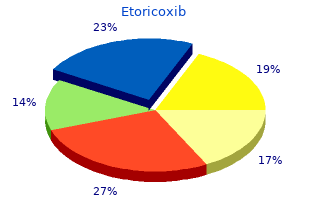
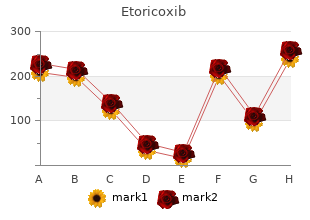
Results and Discussion: Fentanyl group displayed a signifcantly lower Numeric Rating Scale and higher patient satisfaction for most of the time periods after operation (p Most teratomas are extraordinarily vascular arthritis pain medication side effects buy etoricoxib line, which is definitely proven utilizing colour Doppler ultrasound beating arthritis with diet buy etoricoxib online. The tumors could also be entirely exterior rheumatoid arthritis chemo discount etoricoxib online amex, partially internal and partly exterior arthritis pain in feet shoes discount etoricoxib 90mg free shipping, or mainly internal. Polyhydramnios is frequent, and this may be because of direct transudation into the amniotic fluid and because of fetal polyuria, secondary to the hyperdynamic circulation, which is the consequence of arteriovenous shunting. Similarly, high-output heart failure resulting in hepatomegaly, placentomegaly and hydrops fetalis can happen. Prognosis Sacrococcygeal teratoma is associated with a high perinatal mortality (about 50%), mainly because of the preterm supply (the consequence of polyhydramnios) of a hydropic toddler requiring main neonatal surgery. Difficult surgery, particularly with tumors that reach into the pelvis and abdomen, may end up in nerve harm and incontinence. The tumor is invariably benign in the neonatal period however delayed surgery or incomplete excision may end up in malignant transformation (about 10% earlier than 2 months of age to about 80% by four months). Etiology Hydrops is a non-particular finding in a wide variety of fetal and maternal problems, including hematological, chromosomal, cardiovascular, renal, pulmonary, gastrointestinal, hepatic and metabolic abnormalities, congenital an infection, neoplasms and malformations of the placenta or umbilical cord. Hydrops is classically devided into immune (because of maternal hemolytic antibodies) and non-immune (because of all different etiologies). With the widespread introduction of immunoprophylaxis and the successfull treatment of Rhesus illness by fetal blood transfusions, non immune causes have turn out to be responsible for at least seventy five% of the instances, and make a larger contribution to perinatal mortality. While in many instances the underlying cause could also be determined by maternal antibody and an infection screening, fetal ultrasound scanning, including echocardiography and Doppler research, and fetal blood sampling, quite often the abnormality remains unexplained even after professional post-mortem examination. Prognosis Although isolated ascites, each in fetuses and neonates, could also be transitory, the spontaneous decision of hydrops has not been reported and the overall mortality for this condition is about 80%. Ultrasound Diagnosis Figure 1 longitudinal view, abdnormal accumulation of Figure 2 longitudinal view, abdnormal accumulation of serous fluid at the body cavities (pericardial, pleural, or serous fluid at the body cavities (pericardial, pleural, or ascitic effusions). Figure 3 transverse view, at the stomach and bowellevel, Figure four transverse view, at the stomach level, with with abdnormal accumulation of serous fluid at the abdome abdnormal accumulation of serous fluid at the abdome or or ascitic effusion. Fetal remedy Immune hydrops can be successfully handled by blood transfusions to the fetus. Such treatment typically ends in reversal of hydrops and the survival price is about 80%. Fetal remedy also can successfully reverse some types of non-immune hydrops, such as fetal tachyarrhythmias (by transplacental or direct fetal administration of antiarrhythmic medicine), pleural effusions (by pleuro-amniotic shunting), urinary ascites (by vesico-amniotic or peritoneal-amniotic shunting), parvovirus B19 an infection or severe fetomaternal hemorrhage (by fetal blood transfusions), diaphragmatic hernia, cystic adenomatoid malformation of the lungs and sacrococcygeal teratoma (by open fetal surgery), and the recipient fetus in twin-to-twin transfusion syndrome (by endoscopic laser coagulation of the speaking placental vessels). About 80% of such fetuses are constitutionally small, with no increased perinatal dying or morbidity, 15% are progress restricted because of decreased placental perfusion and "utero-placental insufficiency", and 5% are progress restricted because of low progress potential, the results of genetic illness or enviromental damage. Ultrasound findings the finding of a small stomach circumference ought to stimulate the sonographer to consider 4 possible causes: wrong dates, regular small, irregular small or ravenous small fetus. Accurate measurements of the head and stomach circumference, femur size and transverse cerebellar diameter must be taken and their numerous ratios must be examined. Additionally, an in depth examination must be carried out for the detection of any defects or markers of chromosomal abnormalities (mainly triploidy and trisomy 18), and for evaluation of amniotic fluid and fetal activity. A repeat ultrasound examination in two weeks will demonstrate an increase in fetal measurements and the rate of progress is regular (the strains joining the measurements are parallel to the appropriate regular imply for gestation). In regular small fetuses, the mother is normally small (the principle determinant of fetal dimension is maternal dimension), and the ultrasound findings are just like pregnancies with wrong dates. However, a repeat scan in two weeks could demonstrate a further deviation from regular in the numerous fetal measurements. In congenital an infection progress retardation could also be associated with options of hydrops and brain abnormalities (ventriculomegaly, microcephaly or cerebral calcifications). Doppler ultrasound Doppler ultrasound provides a non-invasive technique for the research of fetal haemodynamics. Investigation of the uterine and umbilical arteries provide information on the perfusion of the utero-placental and feto-placental circulations respectively, while Doppler research of chosen fetal organs are valuable in detecting the hemodynamic rearrangements that happen in response to fetal hypoxaemia. In regular being pregnant, impedance to circulate in the uterine artery decreases with gestation and this presumably reflects the trophoblastic invasion of the spiral arteries and their conversion into low resistance vessels. Normal Pregnancy Development of the uterine artery Normal impedance to circulate in the uterine arteries in 1 trimester Normal impedance to circulate in the uterine arteries in early 2 trimester Normal impedance to circulate in the uterine arteries in late 2 and three trimester Normal Pregnancy Development of the umbilical artery Normal impedance to circulate in the umbilical arteries and regular pattern of pulsatility at the umbilical vein in 1 trimester Normal impedance to circulate in the umbilical arteries and umbilical vein in early 2 trimester Normal impedance to circulate in the umbilical arteries and umbilcal vein in late 2 and three trimester Normal Pregnancy Development of the Descending Aorta Color Doppler Energy with visualization of the Aortic Arch and descending thoracic aorta Normal circulate of the descending thoracic aorta in 2 and three trimesters Normal Pregnancy Development of the Middle Cerebral Artery Color Doppler Energy with visualization of the Circle of Willis and the Middle Cerebral Artery Normal circulate of the Middle Cerebral Artery in 1 trimester Normal circulate of the Middle Cerebral Artery in 2 and three trimester Normal circulate of the ductus venosus Normal circulate of the inferior vena cava Normal circulate of the ventricular valves Color Doppler Energy with bifurcation of the renal arteries Normal circulate of the renal artery Abnormal Development of the uterine artery Normal impedance to circulate in the uterine arteries (with the attribute waveform of early diastolic notching) Increased impedance to circulate in the uterine arteries (with the attribute waveform of early diastolic notching) Very high resitance circulate in the uterine arteries (with reverese diastolic circulate) Abnormal Development of the umbilical artery Umbilical arteries high pulsatility index Umbilical arteries high pulsatility index Umbilical arteries very high pulsatility index end diastolic velocity pulsation in the umbilical vein Umbilical arteries Severe instances absence of reversal of end diastolic frequencies Redistribution of blood circulate Middle Cerebral Artery Color Doppler Energy with visualization of the Circle of Willis and the Middle Cerebral Artery. This is manifested by the absence or reversal of forward circulate during atrial contraction in the ductus venosus and this is a signal of impending fetal dying. In constitutionally small fetuses Doppler research of the placental and fetal circulations are regular. Similarly in progress restricted fetuses because of genetic illness the outcomes are sometimes regular. Doppler research of the fetal circulation demonstrate lower in impedance to circulate in the center cerebral arteries and increase in impedance in the descending thoracic aorta and renal artery. These findings counsel that in fetal hypoxemia there is an increase in the blood provide to the brain and reduction in the perfusion of the kidneys, gastro intestinal tract and the lower extremities. Although knowledge of the elements governing circulatory readjustments and their mechanism of action is incomplete, it appears that partial pressures of oxygen and carbon dioxide play a job, presumably by way of their action on chemoreceptors. Chromosomal defects Although low birth weight is a common feature of many chromosomal abnormalities, the incidence of chromosomal defects in small for gestational age neonates is less than 1-2%. However, data derived from postnatal research underestimate the association between chromosomal abnormalitites and progress retardation, since many pregnancies with chromosomally irregular fetuses result in intrauterine dying. Thus in fetuses presenting with progress retardation in the second trimester the incidence of chromosomal abnormalities is 10-20%. The chromosomal abnormalities associated with severe progress restriction are triploidy, trisomy 18 and deletion of the brief arm of chromosome four. The incidence of chromosomal defects is way larger in (a) fetuses with multiple malformations, than in those with no structural defects, (b) the group with regular or increased amniotic fluid volume, than in those with decreased or absent amniotic fluid, and (c) in the group with regular waveforms from each uterine and umbilical arteries, than in those with irregular waveforms from both or each vessels. A substantial proportion of the chromosomally irregular fetuses demonstrate the asymmetry (high head to abdomen circumference ratio), thought to be typical for uteroplacental insufficiency; indeed probably the most severe form of asymmetrical progress retardation is found in fetuses with triploidy. In this condition, which is found in about 1% of pregnancies, the fetal karyotype is regular however there are two totally different chromosomal enhances in the placenta (one is normally regular and the other an autosomal trisomy). Placental mosaicism is also associated with uniparental disomy (inheritance of two homologous chromosomes from one parent), which often ends in progress restriction. Prevalence Oligohydramnios in the second trimester is found in about 1 per 500 pregnancies. Etiology Oligohydramnios in the second trimester is normally the results of preterm untimely rupture of the membranes, uteroplacental insufficiency and urinary tract malformations (bilateral renal agenesis, multicystic or polycystic kidneys, or urethral obstruction). Quantitative criteria embody: (a) the largest single pocket of amniotic fluid being 1 cm or much less, or (b) amniotic fluid index (the sum of the vertical measurements of the largest pockets of amniotic fluid in the 4 quadrants of the uterus) of less than 5 cm. Anecoic areas simulating pockets of amniotic fluid Color Doppler power at the umbilical cord In the absence of the "accoustic window" normally provided by the amniotic fluid, and the "undesirable" postures typically adopted by these fetuses, assured exclusion of fetal defects could also be unimaginable. Nevertheless, the detection of a dilated blader in urethral obstruction and enlarged echogenic or multicystic kidneys in renal illness must be comparatively simple. In instances of preterm prelabour rupture of the membranes, detailed questioning of the mother could reveal a history of persistent leakage of amniotic fluid. Furthermore, in uteroplacental insufficiency, Doppler blood circulate research will typically demomstrate high impedance to circulate in the placental circulation and redistribution in the fetal circulation. In the remaining instances, intra-amniotic instillation of regular saline could help enhance ultrasonographic examination and result in the prognosis of fetal abnormalities like renal agenesis. Prognosis Bilateral renal agenesis, multicystic or polycystic kidneys are deadly abnormalities, normally in the neonatal period because of pulmonary hypoplasia. Preterm rupture of membranes at 20 weeks or earlier is associated with a poor prognosis; about 40% miscarry inside five days of membrane rupture because of chorioamnionitis and in the remaining 60% of pregnancies more than 50% of neonates die because of pulmonary hypoplasia. Uteroplacental insufficiency leading to oligohydramnios at 18-23 weeks could be very severe and the most probably outcome is intrauterine dying. Prevalence Polyhydramnios in the second trimester is found in about 1 per 200 pregnancies. Etiology There are essentially two main causes of polyhydramnios; decreased fetal swallowing or absorption of amniotic fluid and increased fetal urination. Reduced fetal swallowing could also be because of craniospinal defects (such as anencephaly), facial tumours, gastrointestinal obstruction (such as esophageal atresia, duodenal atresia and small bowel obstruction), compressive pulmonary problems (such as pleural effusions, diaphragmatic hernia or cystic adenomatoid malformation of the lungs), slim thoracic cage (because of skeletal dysplasias), and fetal akinesia deformation sequence (because of neuromascular impairement of fetal swallowing). Increased fetal urination is observed in maternal diabetes mellitus and maternal uremia (increased glucose and urea cause osmotic diuresis), hyperdynamic fetal circulation because of fetal anemia (because of red cell isoimmunization or congenital an infection) or fetal and placental tumours or cutaneous arteriovenous malformations (such as sacrococcygeal teratoma, placental chorioangioma), or twin-to twin transfusion syndrome. Quantitatively, polyhydramnios is defined as an amniotic fluid index (the sum of the vertical measurements of the largest pockets of amniotic fluid in the 4 quadrants of the uterus) of 20 cm or extra. Alternatively, the vertical measurement of the largest single pocket of amniotic fluid freed from fetal parts is used to classify polyhydramnios into gentle (eight-11 cm), reasonable (12-15 cm) and severe (16 cm or extra). Although 80% of instances with gentle polyhydramnios are thought of to be idiopathic, in the majority of instances with reasonable or severe polyhydramnios there are maternal or fetal problems. The considerations for 2 timing of tracheostomy in burn sufferers are much like rheumatoid arthritis pain questionnaire discount etoricoxib 90 mg line these for any critically unwell patient Intensive Care Unit Management requiring mechanical ventilation and are sometimes topic to arthritis medication starting with t buy etoricoxib 120 mg fast delivery institutional bias given an overall lack of proof arthritis in neck images cheap etoricoxib line. Infectious Disease Burn sufferers are at elevated danger of infection as a result of arthritis in dogs tramadol discount etoricoxib amex lack of the barrier operate of the skin and an induced state of immunosuppression. Hypermetabolism and catabolism persists 9 months to so long as defined by the burn injury alone are warranted. Use of early enteral feeding may be bene cial and cautious attention must be paid to minimize the interruption of nutrition for opera tive procedures. Research �Rule of Ten� is frequent and peak serum glucose concentrations and period of hyperglycemia have been associated with elevated mortality. Pharmacologic interventions to address hypermetabolism embrace the anabolic steroid oxandrolone and the beta blocker professional pranolol. Oxandrolone has been demonstrated to enhance wound healing and decrease hospital length of keep. Propranolol has been reported to attenuate the in ammatory response and decrease catabolism. The use of immunonutrition remains controversial with trials reporting blended results. Transfusion the currently obtainable knowledge recommend that restrictive transfusion strategies are bene cial in burn sufferers. Immunonutrition has been demonstrated to enhance survival in massive prospective sion. Fiberoptic bronchoscopy and bronchoalveolar lavage lead to overuse of antibiotics. Initial doses of antibiotics must be decreased for a contracted quantity of distribution. A magnesium sulfate infusion is begun at 2 mg/h and intermittent doses of hydralazine and labetalol are required to treat hypertension. Twelve hours � Cardiopulmonary physiologic adjustments of later, her urine output falls and despite uid administration by the obstetric pregnancy embrace hypervolemic excessive cardiac team, it remains under 0. You are consulted output state, elevated minute ventilation and and you assess the patient, noting an altered mental standing, respirations decreased useful reserve capability. There are roughly excessive mortality price and excessive price of permanent 4 million births per 12 months within the United States alone. Key information areas warranting special consideration on this part embrace: (1) physiologic adjustments of pregnancy, (2) extreme hypertensive disease throughout pregnancy, (3) postpartum hemorrhage and the coagulopathy of pregnancy, and (4) the critical illness of amniotic uid embolism. Physiologic Changes in Pregnancy Obstetrical critical care requires a foundation within the cardiopulmonary physiologic adjustments in pregnancy. Dur ing a normal pregnancy, cardiovascular adjustments embrace a hypervolemic, excessive cardiac output state secondary to the rise in blood quantity and heart price. The circulating blood quantity could be elevated by as much as 50% above regular whereas the red cell mass will increase at a decrease price of 25% in a single gestation. Following infant delivery, the mother complained of dyspnea, had an acute mental standing change and Pulmonary adjustments also occur with the diaphragm elevation by the enlarging uterus and ribcage circumference growth secondary to elevated levels of relaxin. The placenta has been extracted and adjustments can lead to a decrease in useful residual capability of 25%, and as much as 70% vigorous bimanual therapeutic massage is being performed. Although uterine tone is sweet, the patient continues to have uterine bleeding Hypertensive Diseases with bleeding famous from peripheral intravenous websites. The Hypertensive diseases occur in 12% to 22% of pregnancies and account for approxi patient is hypotensive despite crystalloid, colloid, and blood mately 17% of maternal mortalities within the United States. Gestational hypertension is hypertension after the rst 20 weeks of pregnancy with out proteinuria, and blood pressures usually normalize within the postpartum and disseminated intravascular coagulation, all of which are typically present throughout or interval. Pre-eclampsia is recognized in a previously normotensive patient when sys-5 10 shortly after labor. Classi5 cation of delicate versus extreme pre-eclampsia relies on indicators of organ dysfunction and/or signs of hypertensive encephalopathy. Hypoxemia is proposed to be secondary to cardiogenic edema of the10 the patient on this vignette has extreme pre-eclampsia with multiorgan dysfunction, alveoli, non-cardiogenic edema of the alveoli, exudative edema, and bronchospasm. Therapeutic levels of magnesium for extreme preeclampsia Therapeutic choices embrace use of constructive-finish expiratory strain, bronchodilators, vary from 4 to 6 g/dL. A magnesium level above 8 g/dL can lead to indicators of magne and for refractory hypoxemia, nitric oxide may be of bene t. Amniotic particles could trigger pulmo the differential diagnoses embrace new onset seizure, withdrawal seizure, and eclamptic nary vasospasm and pulmonary hypertension. Cardiac arrhythmias together with bradycar dia, pulseless electrical activity, and ventricular brillation may occur. An eclamptic seizure usually presents with tonic-clonic movements in addi tion to altered mental standing. Regardless of the mechanism of the seizure, securing the airway within the pregnant female must be a precedence if preliminary therapeutic measures fail. Regardless of the explanation for hypotension, these sufferers ought to have steady telem etry. Postpartum hemorrhage occurs in about 4% to 6% of pregnancy, with 80% caused by uterine atony. To forestall hypox emia, it could be appropriate to use lung protective ventilation or even alternative forms of ventilation with refractory hypoxemia. Bedside echocardiography performed by the excessive mortality, with reported rates from 26% to 86%. Although mortality has drasti-8 9 critical care physician urgently could assist information resuscitative efforts. It is also impera cally decreased over the years, 85% of survivors undergo some permanent neurological tive to right disseminated intravascular coagulation to forestall any further bleeding. Decreased circulating blood quantity physiologic adjustments of pregnancy with special attention paid to the cardiopulmonary B. Decreased useful residual capability termined by its trigger-gestational hypertension, pre-eclampsia/eclampsia, and chronic D. Ryan M, Hamilton V, Bowen M, McKenna P: the function of a excessive-dependency unit in a A. If sufferers survive, long run sequelae is uncommon Am J Obstet Gynecol 2003; 188:532�6. Taler: Report of the National High Blood Pressure Education Program Working Group on high blood pressure in pregnancy. Her house medications embrace wafarin, metoprolol, � the aged patient has a excessive chance for tiotropium, albuterol, tramadol, simvastatin, and hydrochlorothiazide. Between years 2000-2030 the variety of older adults will increase from 550 million to 973 million C. Basal operate of organ methods could stay the same or slightly decrease, however the physiologic reserve decreases with age. Less compliant heart and vascular bed leads to elevated sensitivity to quantity b. Consider dynamic monitoring (pulse strain variation, stroke quantity variation) G. Contributing factors to delirium 6,7 discharge than unplanned surgical admissions and medical admissions a. Long-term mortality as a metric may be awed on this aged population, and somewhat high quality-of-life and other indicators must be thought of. Providing steering in establishing goals of care at the finish-of-life is a vital function for the Intensivist. In the Emergency Department, she develops extreme respiratory may be an necessary outcome. Which of the following drug infusion regimens is greatest for sedation on this patient Etomidate the above case is representative of the geriatric patient with a number of comorbidies hav E. Administration of large vol He has previously lled out a an advanced directive that acknowledged �Do Not Intubate, Do Not Re umes of plasma in a patient with no atrial kick and diastolic dysfunction from years of suscitate. Place the patient on bi-level non-invasive ventilation to have a discussion with the patient and family so that her goals of care coincide with E. New York, Springer Publisher, 2013, pp3-13 preoperatively within the emergency room and three liters crystalloid intraoperatively in the course of the 2-hour 2. Purchase etoricoxib no prescription. 20 Ways to Beat Rheumatoid Arthritis.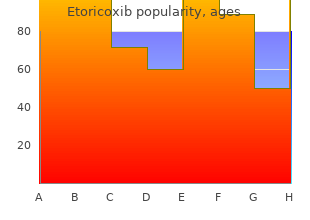
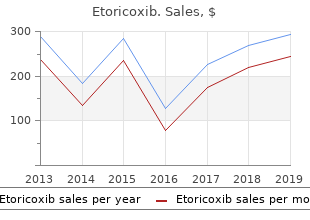
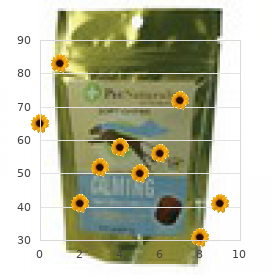
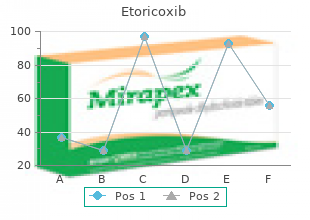
Raleigh Office:
5510 Six Forks Road
Suite 260
Raleigh, NC 27609
Phone
919.571.0883
Email
info@jrwassoc.com